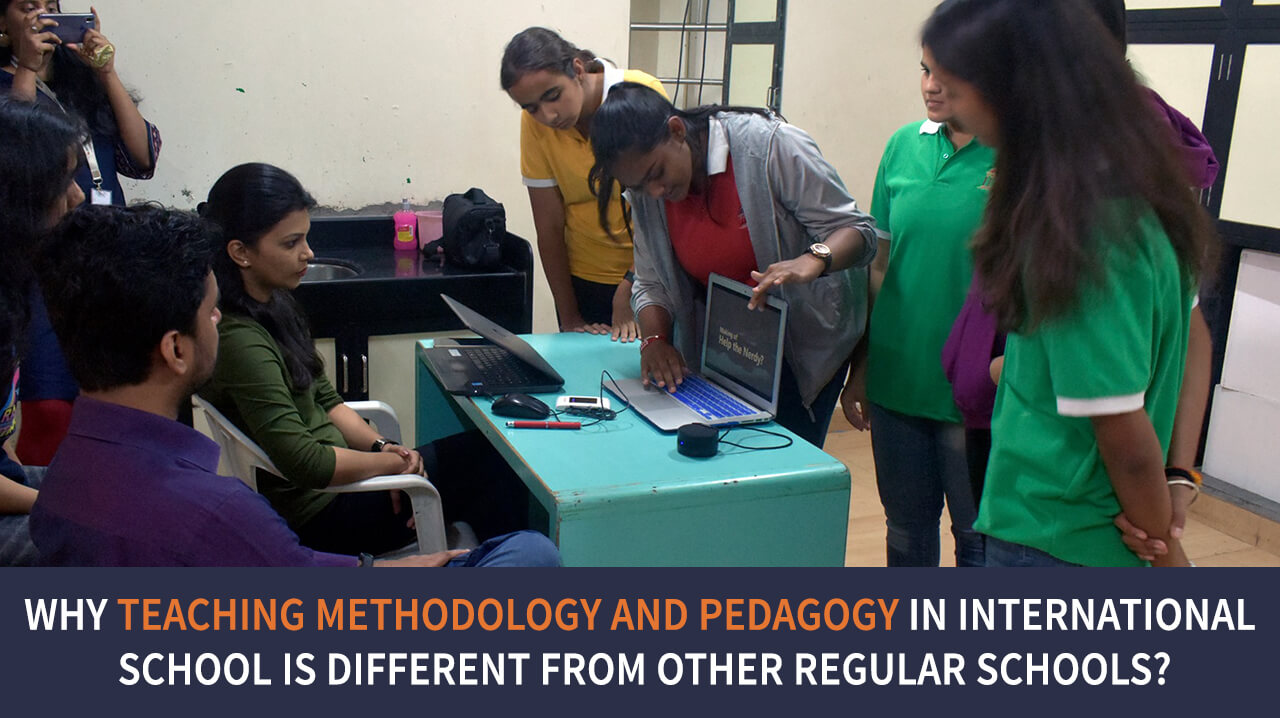Why Teaching methodology and pedagogy in International school is different from other regular school?

Why is teaching methodology and pedagogy in international schools different from other regular schools?
International schools have gained more popularity in recent years due to their effective method of imparting education to students from multiple backgrounds. There are several advantages and opportunities that international schools provide to their teachers as well as students in education methods and teaching styles. Here are a few points that discuss what makes teaching methodology and pedagogy in international schools in Pune and other parts of India stand out as compared with other schools:
- Interesting curriculum with a different approach: Instead of opting for the age-old system of providing education to children, international schools follow a different syllabus that is largely inquiry-based. The inquiry-based learning allows teachers to make sure that their students are skilled in academics, personal talents and overall growth. This is different from the general rigid syllabus taught in other schools. For example, some of the best schools in Pune, among which MIT Gurukul is a leading institution, follow the International Baccalaureate (IB) education system. At the same time, teachers also help develop the basics and core learning values in students such as an organized study approach, a systematic daily schedule, learning to grow intellectually and emotionally etc.
- Small batch of students and personal interactions with teachers: As compared to most other private and public schools, IB syllabus schools offer smaller batch sizes. As a result, every student gets an opportunity to interact with their teachers whenever required, solve their doubts, ask questions or address their difficulties. Such personal interactions and special assistance make students feel valued, comfortable and heard in the classroom. It is proven that not only do their grades improve but they also grow inquisitive and do not hesitate to approach their teachers for advice. The teachers get a better chance and more time to know the specific needs of each student and may work accordingly for their improvement. At MIT Gurukul the average class size is 20 to 24, which has been found to be optimal for the best educational outcomes.
- Special training for teaching in international schools: Most of the teachers in international schools are given intensive training to help them grasp the international syllabus that the school follows. They are also trained to work with modern technology that is used in the classroom for a better audio-visual teaching experience. All international schools have installed smart boards or interactive portable boards, devices for online research and presentation tools. Such training methods help teachers become effective communicators and better leaders in a school setting. MIT Gurukul has continuous professional development trainings and orientations for all its teaching and non-teaching staff.
- Opportunity to learn new languages: English is the primary medium of communication in most international schools. However, due to the multicultural background of teachers and students, there are other languages which are taught and used to communicate with each other. Most instructors in international schools have native or bilingual proficiency in several languages. This may be an interesting opportunity for both the teachers and students to learn new languages. The top five schools in Pune like the MIT Gurukul teach more than one language to their students and expect their teachers to have some knowledge in diverse languages. These include many native Indian languages and foreign languages like French and German. Such qualified teachers with multilingual abilities are able to connect with students from different backgrounds.
- Exposure to different cultures from across the globe: Teachers in an international school come from different countries and multiple cultural backgrounds. While teaching, they interact with each other and learn a lot about different teaching methods, travel experiences and various approaches to situations in everyday life. Interestingly, the classroom space is no different. In international schools, students share diverse backgrounds and some of them may also arrive in a different country because their parents got a job transfer. They often share their past experiences and learning with the teachers and their classmates in their new schools. This also makes the teaching methodology interactive and a two-way discussion method.
- Promoting lifelong learning among students: In an international school, such as MIT Gurukul, the teaching methodology is derived based on the fact that students need to be taught not only about subjects, but that teaching must also focus on wellbeing and happiness. Also that the teaching should promote independence, critical and logical thinking, a problem-solving mindset and a collaborative work style. Hence assignments like the extended essay or the theory of knowledge are integral parts of the international schools’ curriculum.
Therefore, teaching methodology, and pedagogical traditions in international schools involve lots of everyday learning. Personal interactions, sharing of experiences among students and teachers, and hands-on approaches to learning are part of them. Such teaching methodology provides a solid grounding in overall student experience and teacher success. We encourage all parents to consider the merits of the international school teaching methodologies and enroll their children in such schools. MIT Gurukul’s parents have found our teaching methodology world class and the parents satisfaction rate for our pedagogy is 100%.
Also Read


